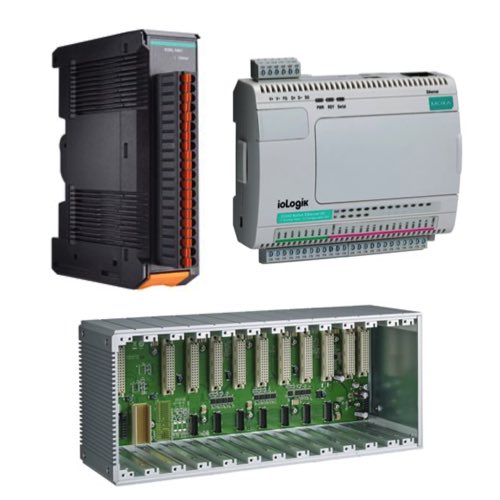Moxa Controllers & IO

Moxa’s Controllers and I/O solutions are designed to bring reliability and flexibility to industrial automation systems, especially in harsh environments where performance and uptime are critical. Their controllers are built on open platforms, such as the ioThinx 4530 and UC series, which support various industrial protocols and programming environments, including C, Python, and Node-RED. These controllers are often used in edge applications where data needs to be pre-processed and transmitted securely to cloud or SCADA systems. Moxa’s commitment to long-term availability and industrial-grade durability makes these products ideal for critical applications in oil & gas, transportation, water and wastewater, and manufacturing sectors.
For I/O applications, Moxa offers both modular and remote I/O options that allow users to efficiently collect and transmit data from sensors and actuators to control systems. The ioLogik series, for example, supports remote configuration and monitoring via Ethernet or serial communication, and can be deployed with minimal wiring using daisy-chaining methods. These I/O modules support multiple I/O combinations—digital, analog, relay, and thermocouple inputs—and are often used in distributed architectures where fast response and easy expansion are essential. Moxa also incorporates support for protocols like Modbus TCP, EtherNet/IP, and SNMP, which enhances interoperability with legacy and modern systems.
I/O
Digital Signals
Digital signals are represented in either a true or false. There is no gray area with digital signals. An example of this might be a light switch. A light switch is either on or off. Another example of this might be a motor that is running or not running. Digital signals can be generated with both AC and DC circuits with varying voltages, currents and resistance. Some practical examples of using digital signals in an industrial environment might be if a pump is running or not running or a whether a valve is open or closed.
Analog Signals
Analog signals convey information in the form of a range. A light switch might be on or off as a digital signal, but a dimmer switch would be an analog signal. It can be on or off, but it can also be somewhere in between. A practical example of using analog signals in an industrial environment would be if there is a need to measure the level of a tank; whether it's full, empty or somewhere in between. Analog signals can take many different forms with some of the more common being a 4 to 20 milliamp signal or a 0 to 5 or 0 to 10 volt signal.
Output Signals
Output signals send data out and can be either analog or digital. For example, a digital output could be a run command to a motor. In this case, a signal would be sent that tells a motor to either start or stop. An analog output could be sent to control the speed of that motor, since analog signals have the ability to control a range of values.
Inputs Signals
Inputs signals are received data from either a digital or analog source. Just like with output signals, inputs can be either digital (which would tell if a motor is running or a door has been opened) or analog (which would be able to tell if the pressure in a pipe is too high or what the level in a water tank is).

